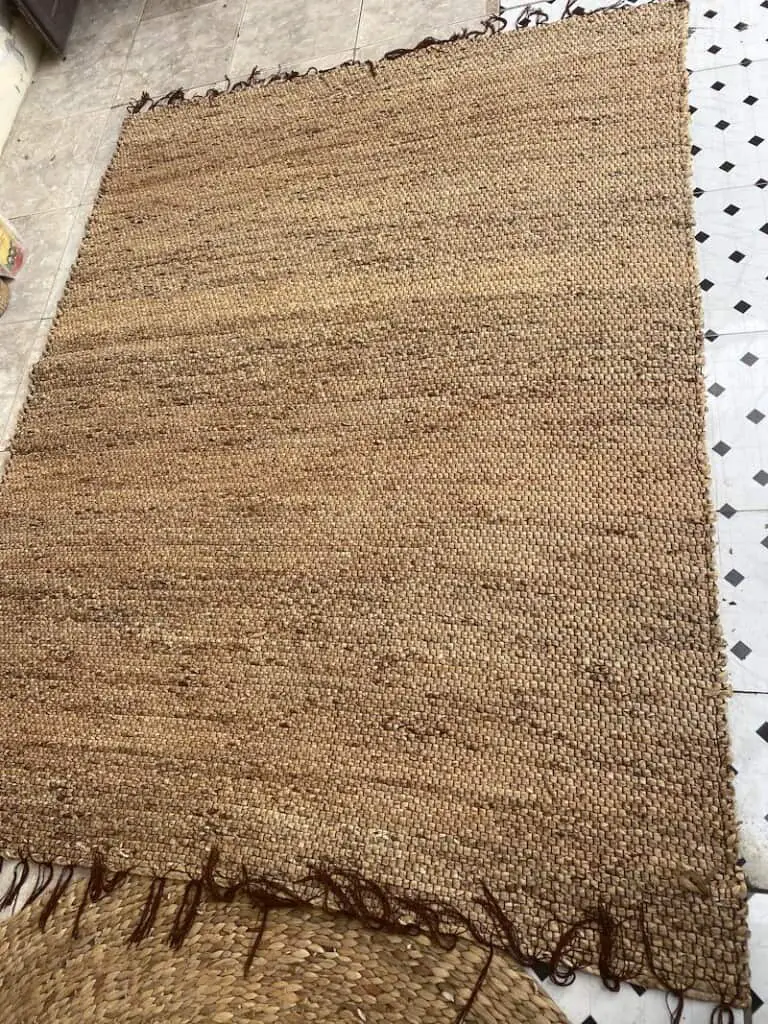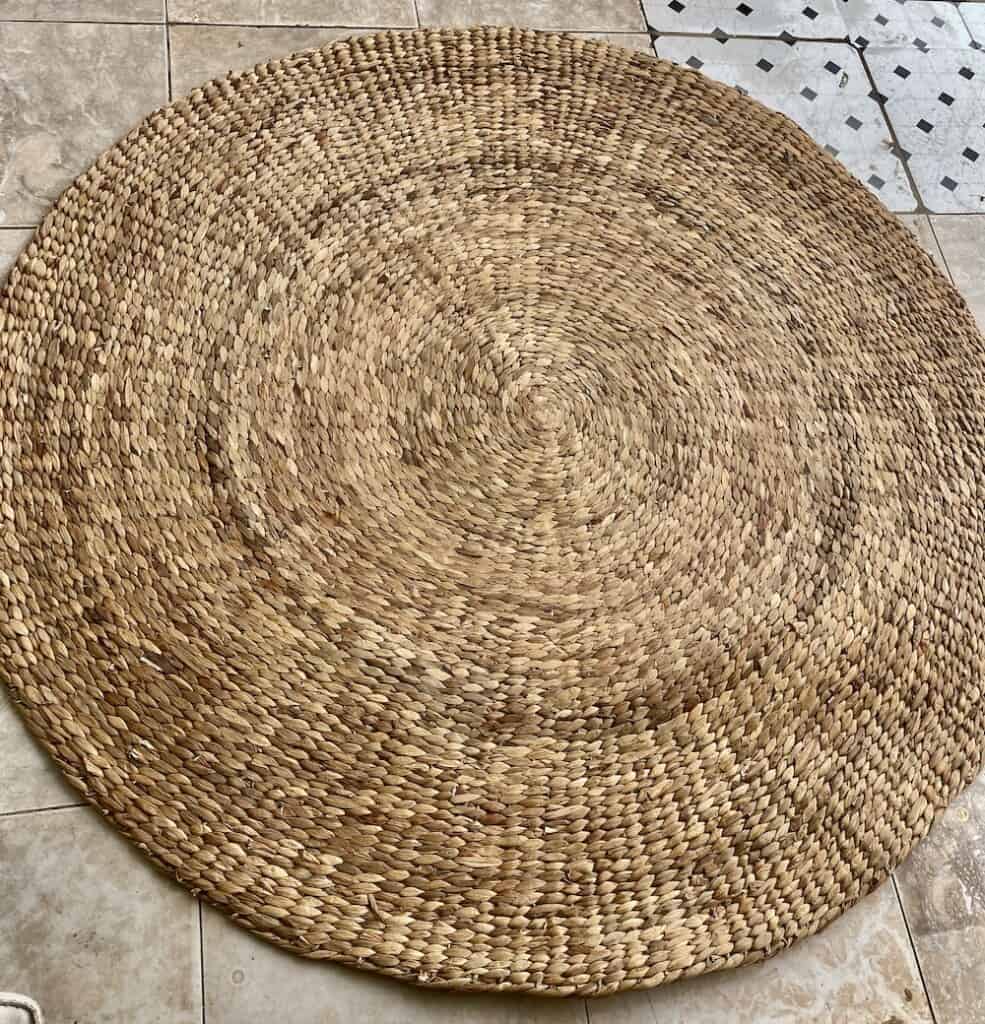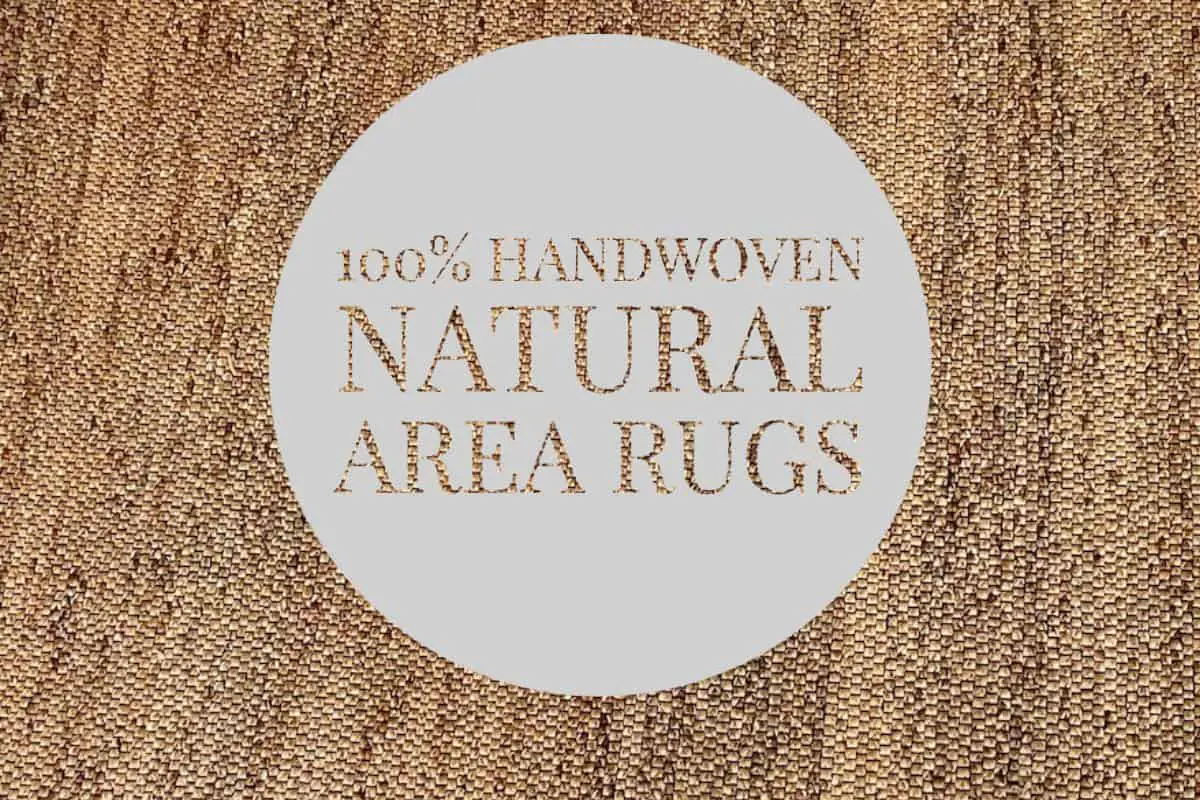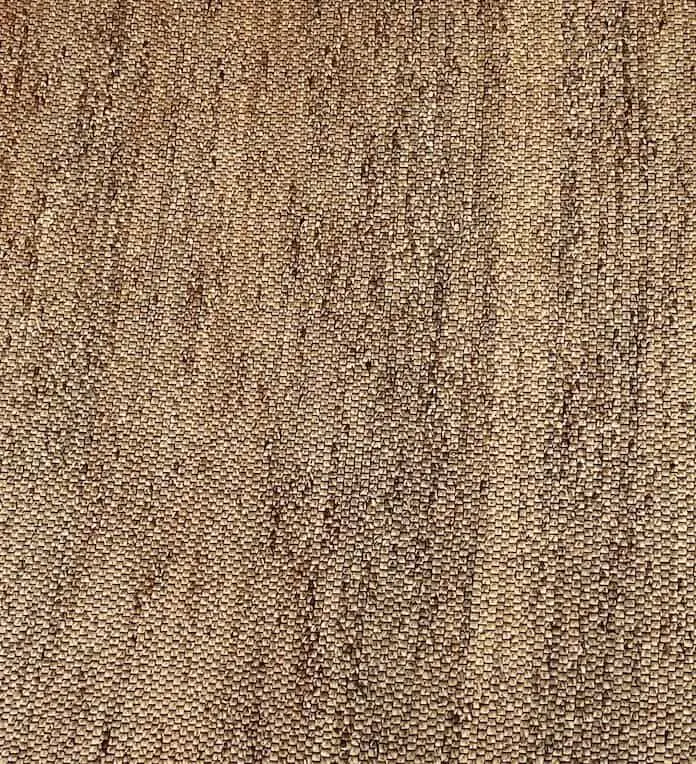We love the new natural trend for the home. And as part of this new natural trend, we really love and appreciate area rugs that are 100% handmade and handwoven.
Natural area rugs are made from 100% natural materials such as jute, sisal, seagrass, and water hyacinth. These rugs are usually hand-woven or machine-made. The hand-woven rugs in Vietnam help to support entire communities that are involved in some aspect of the production of the rugs. With some basic care and cleaning, your rugs can last for a long time.
To find out more about these rugs, you can read our short stories about Natural Rugs and Carpets but click below.
What Are Natural Fiber Rugs Handwoven Area Rugs?
Natural area rugs are hand or machine woven and are made from natural fibers or materials like jute, sisal, seagrass, or water hyacinth. In Vietnam, they weave a lot of rugs in both seagrass and water hyacinth.
Here is the definition of the jute, sisal, seagrass and water hyacinth natural fibers:
- Jute – Jute is a long, soft, and sometimes shiny fiber that can be spun into a strong thread. As the thread is strong it could be put on machines and machine woven. One issue with jute rugs is in high traffic areas they can unravel.
- Seagrass – Seagrass is a grass that grows in saltwater areas. Many times it is cultivated in flooded waterways which are just off the ocean. You can learn more about Seagrass by reading our blog Eco-Friendly Seagrass Materials Used in Home Decor Products by clicking here.
- Sisal – Sisal is from the agave plant. They become durable when the fibers are dried and then interwoven.
- Water Hyacinth – Water hyacinth is a hollow, yet grassy fiber. It is not very long but is more like a kind of dried grass. It can be soft after woven. You can find out more about water hyacinth by reading our blog About Weaving Water Hyacinth Baskets Into Home Décor Products by clicking here.

Handwoven Seagrass and Water Hyacinth Area Rugs
In Vietnam, we weave some very nice seagrass and water hyacinth rugs. Here are a few things about these natural area rugs:
- 100% handwoven – These rugs are all 100% handwoven. No machines are used.
- Helps women – Many of the weavers are women. This helps them to be able to weave these in their home so they can stay home and earn income while taking care of their small children and farms.
- 100% natural – They are 100% natural in that no synthetic materials in the production (unless it is part of the design).
- Durable – Natural rugs, especially like a Seagrass rug are very durable.
Manufacturing Seagrass and Water Hyacinth Handwoven Area Rugs
We really love these natural rugs as we feel the color tones are a great addition to any home or any place. At Mondoro we can help you to manufacture any Seagrass or Water Hyacinth rugs.
If you are looking to manufacture your own seagrass or water hyacinth rug design here are a few things to remember:
- Dyeing – Both Seagrass and water hyacinth materials can be dyed into a variety of colors. They do tend to take colors like black or blue better than some of the other colors, but we have also dyed the seagrass or water hyacinth into some reds, greens, oranges, and yellows.
- Sizes – As our rugs are all 100% handwoven and woven mainly by women in their homes the largest size they weave the rugs are about 3 meters or about 9.8 feet in square or rectangular. The reason is that it can get very heavy to weave these rugs by hand when they are weaving them.
- Weaves – They can weave the rugs in a variety of weaves. The same weavers who are weaving baskets are usually also weaving the rugs.

Care For Your Handwoven Natural Area Rugs
As with all rugs, your natural rugs will need to have some specific care. Here are some tips to help ensure that your rug will always look fresh and new:
Rug Pad Protection
A really good quality rug pad can not only make it more comfortable to walk on your rug but it can also extend the life of your rug. A rug pad should not extend to the edge of your rug, but should be about 1” smaller all around the edge.
Here are some reasons why a rug pad is a good idea:
- It keeps the rugs securely in place.
- Gives uniformed cushioning and comfort.
- If the rug is on a tiled floor over time the grout lines in the tile can ruin the shape of your rug.
Here is a rug pad we like that you can consider to buy, find out more by clicking here.
Rotate Your Rugs
Rotating your rugs is always a good thing to do for any rug that you may have, your natural rug is no different. Rotate your rugs at least once a year. If your rug is in a high traffic zone or area you may want to rotate it at least every 6 months or more. This is especially important if your rug is in an area that gets a lot of sun on just one part of the rug gets sun. The constant sun can fade or change the color on most rugs.
If your rug is also in a dark area or a dark corner unwanted pests can invade your home. Moths are known to use dark, quiet corners such as under furniture to lay their eggs. This is why rotating your rugs on regular basis is important.
Vacuum Clean Your Rug
You can vacuum clean your natural rug just like you would another rug. You should vacuum clean your rug from all directions, passing over each area several times. When you are vacuum cleaning your rug, do not use a beater bar on the vacuum as it could damage the rug. But do use a strong suction vacuum. Never use a steam cleaner or carpet cleaner solution on your natural rug.
If you have a house with pets or small children you may want to vacuum clean your rug a few times a week or even daily. If you have moderate traffic twice or even once a week is usually fine.
Shake Out Your Rug
If your rug is not too large then shake it out. On a bright sunny day, you can take your natural rug outside and shake it off and even leave it out in the sun for a few hours rotating the rug on the front and backside a few times.
The sun will not hurt the rug but make sure any surface you lay it on it is completely dry. You do not want your rug to get wet.
Cleaning Up Spills On Your Natural Handwoven Area Rug
When a stain happens on your natural carpet is best that you do not allow it to soak in but clean it up immediately.
Here are a few tips for cleaning up spills on your natural are rug:
- Blot stain with a towel – Blot the new statin with a clean, absorbent towel. Allow the towel to absorb most of the moisture and dirt. Keep blotting the stain until the stain comes out.
- Difficult stains – For very difficult stains you can use a tiny amount of detergent like a carpet cleaner. Try not to add to much water and do not let the stain soak as too much water or harsh chemicals can damage the rug. Use a towel to blot and get out the stain.
- Dry with a blow-drier – Once you are done cleaning, and if the rug is wet, then dry the area with a blow dryer. Try to dry it on the front and also the backside. Natural rugs if left wet can mildew, so It is very important the rug is kept dry.
Some dry cleaners are able to dry clean natural rugs. If you have stains or spills you are not sure you can clean you can check with your local dry cleaner to see if they are able to dry clean your rug. Make sure the dry cleaner has experience in cleaning natural rugs before you give it to them to clean since if they do not know how to clean natural rugs they could damage your rug.
A natural area rug can add a lot to your home. A handwoven natural area rug, if cared for properly, will give your home a natural look that will remain in fashion for years to come.
If you were interested in developing some hand-woven natural rugs we would love to hear from you. Please feel free to contact Anita by clicking here or contact me by email by clicking here. At Mondoro we love to you create, develop and manufacture amazing home decor products.
Related Questions
What is Spun Bamboo?
Spun bamboo was invented over 800 years ago in Vietnam as a way to give a cheaper alternative to the home decor and home utensil materials that were then being used. Spun bamboo is called spun bamboo as it is spun out pieces of bamboo and then the bamboo pieces are glued together into a form. This production of spun bamboo helps women in these villages to earn an extra income. Spun bamboo is a great natural product and can be used in a variety of home decor and kitchen products.
You can find out more by reading our blog What is Spun Bamboo? Using Spun Bamboo in Product Development by clicking here.
What is Faux Rattan?
Faux rattan is as the name implies, a faux or simulated material to look like rattan. The reason is that faux rattan can be used outdoors. Vietnam produces a lot of faux rattan furniture. With its weaving industry, Vietnam continues to grow its weaving of faux rattan furniture and other faux rattan items. There are several reasons for this including the availability of materials and the factory workers are used to weaving wicker furniture and other items using faux rattan.
You can find out more about faux rattan by reading our blog Hand-weaving Faux Rattan In Vietnam, What You Need to Know by clicking here.



